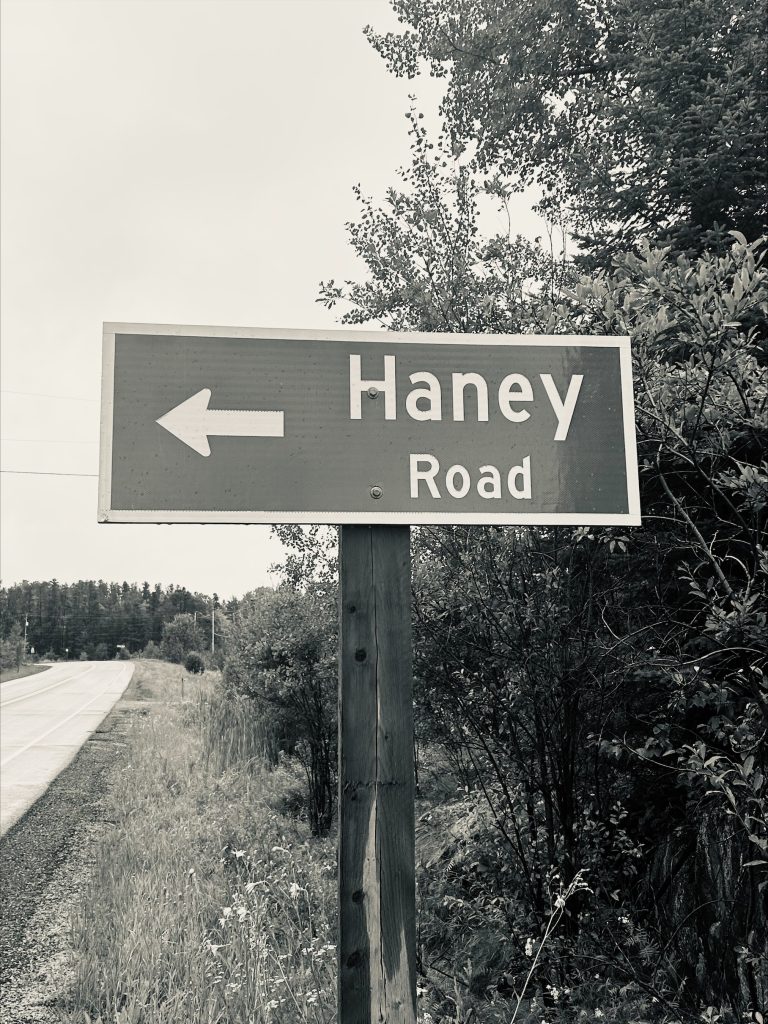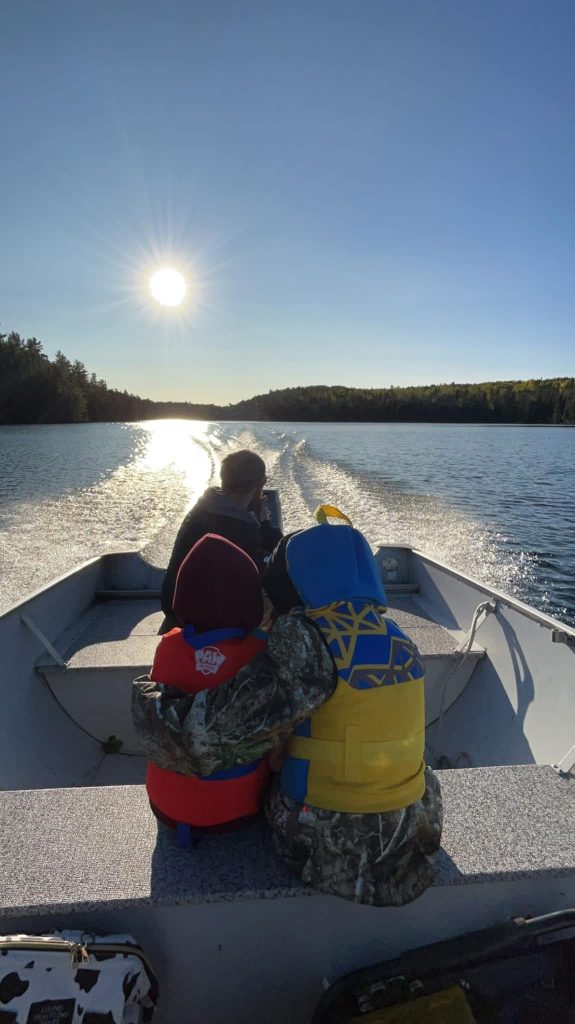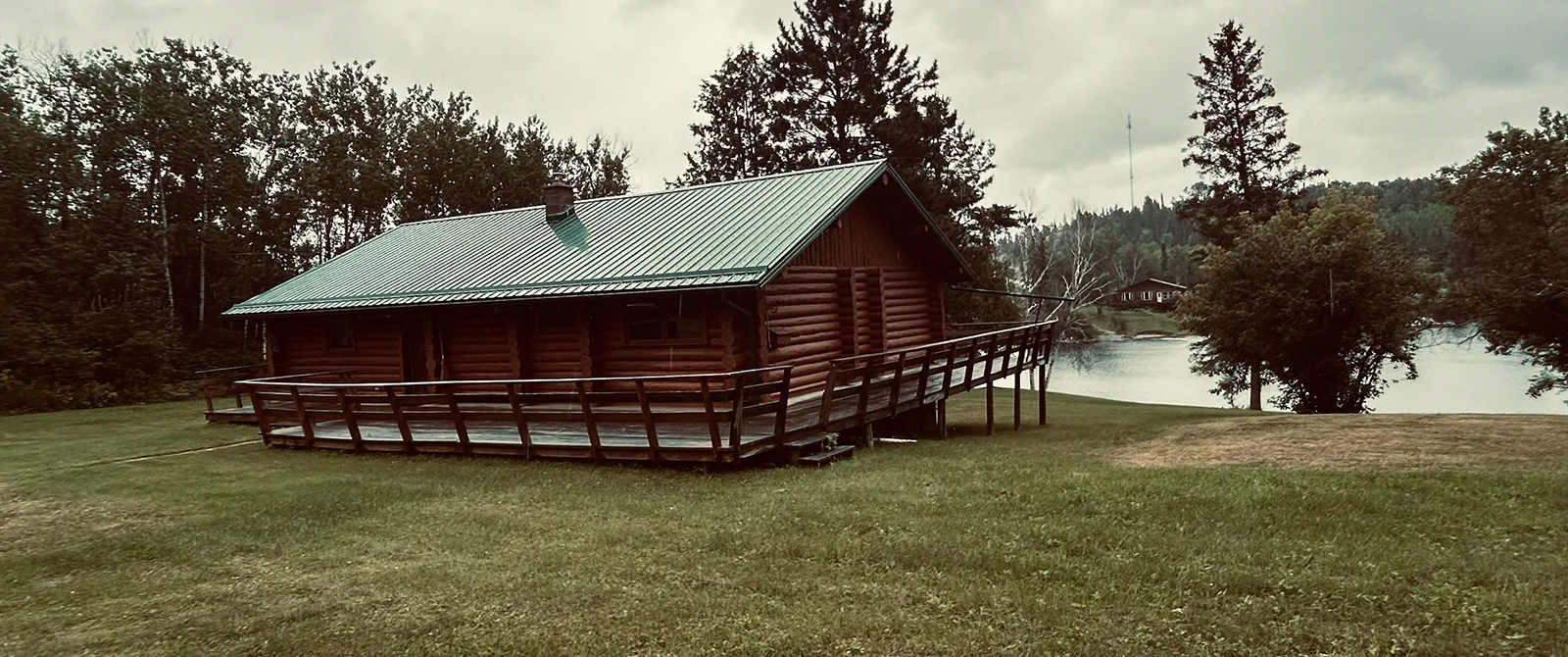Originally published in Lake of the Woods Area News, Volume 55, Number 5, Winter 2025
My story of lake life is little different than many others. My family’s history in the Kenora area stretches back to the 1800s, perhaps even further. Our family, over the years, has inherited more than one homestead under the Haney name. It was divided up, but we all spent countless hours and days at each place. The Haney Road off Highway 658 is a permanent reminder of our family’s long and lasting history here.
Growing up, I learned so much about our past simply by listening to my mother, uncles and grandparents. Their childhoods mirrored those of their parents, filled with the skills of self-sufficiency. It was a life deeply intertwined with the land, where the rhythms of nature dictated the pace of daily existence.
The men in my family began working young, around the age of eleven on the family homestead, nestled between Austin and Deacon Lakes. They entered the bush and fields, learning the trades of the land. My grandfather, for example, became a jack-of-all-trades, mastering skills by observing his father. He hunted, trapped, and helped raise farm animals, which provided food for the family. Large gardens provided vegetables, stored to last through the winter. Living off the land was a way of life, a connection to the earth that feels distant in today’s world. The values instilled were those of hard work, resilience, and a profound respect for nature.
Life on the homestead was a tapestry woven with the threads of the seasons. Spring was a time of renewal, as the family prepared the soil for planting. Fields were tilled, seeds were sown, and the anticipation of a bountiful harvest filled the air. Summer brought long days of tending to the crops, weeding, watering, and protecting them from pests. The garden became a vibrant kaleidoscope of colors and textures, teeming with life. As autumn approached, the focus shifted to gathering and preserving the fruits of their labour. Canning, pickling, and drying became essential tasks, ensuring that the family would have enough to eat during the cold winter months. And winter, while a time of rest, was also a time for reflection and preparation for the coming year.
The animals were an integral part of the homestead. Cows provided milk and butter, chickens laid eggs, and pigs and cattle were raised for meat.
The bush surrounding the homestead was both a resource and a sanctuary. It provided firewood for heating and cooking, timber for building, and wild game for the table. It was also a place of adventure, where the children explored the woods, swam in the creeks, and discovered the secrets of the natural world. The bush was a place of solitude and reflection, where everyone could connect with the land and find peace in its beauty.
The family’s connection to the land extended beyond mere survival. It was a spiritual connection, a sense of belonging to something larger than ourselves. Everyone understood the delicate balance of nature and the importance of living in harmony with the environment. My ancestors practiced sustainable farming methods, rotating crops, and using natural fertilizers. Respect for the animals they raised and the wild creatures that shared their land was paramount.
This way of life instilled in our family a deep sense of self-reliance and resourcefulness. My forebearers learned to fix things themselves, to make do with what they had, and to never take anything for granted. They developed a strong work ethic and a sense of pride in their accomplishments. They also learned the importance of community, helping their neighbours in times of need and sharing their bounty with those less fortunate.
As the world changed, so did the family’s way of life. The advent of modern technology and the lure of urban living gradually drew younger generations away from the homestead. My grandmother sold the log home in 2024 after my grandfather passed away, but the farm remains in the family.
I would never be far away and now live in the Lakeside area in Kenora. My work as a firefighter in Clearwater Bay keeps me close to the land I have always loved.
The way I grew up living with my grandparents was different than many of my friends. I was raised learning to cook, bake and clean. By the age of seven I was learning to hunt, skinning deer and moose being taught by my grandfather and learning to fish and clean them from my father.
It wasn’t always all work and no play. When we did have time to just be free, I was running through the bush bare foot and buck wild, bridge jumping and swimming with my cousins. For us, it was just about being normal kids playing in the mud and not worrying about how dirty we were getting.
Being raised to live off the land and to respect Mother Nature has been a huge part of my life, which I’m now teaching to my own children. Taking them hunting and fishing and showing them what plants you can and can’t eat gives us a chance to bond with the real world rather them sitting and staring at a screen all day.
As I reflect on my family’s history, I am filled with a sense of gratitude and respect. I am grateful for the sacrifices they made, the hardships they endured, and the lessons they taught me. The homestead may no longer exist in its original form, but its legacy lives on in our hearts and minds. It is a legacy that will continue to inspire and guide us as we navigate the challenges of the modern world.
I’ve made a promise to myself to teach my children the same invaluable lessons I learned from my family.
This will help allow the knowledge and appreciation of what our land has to offer to continue and our way of living to be passed down to future generations.















